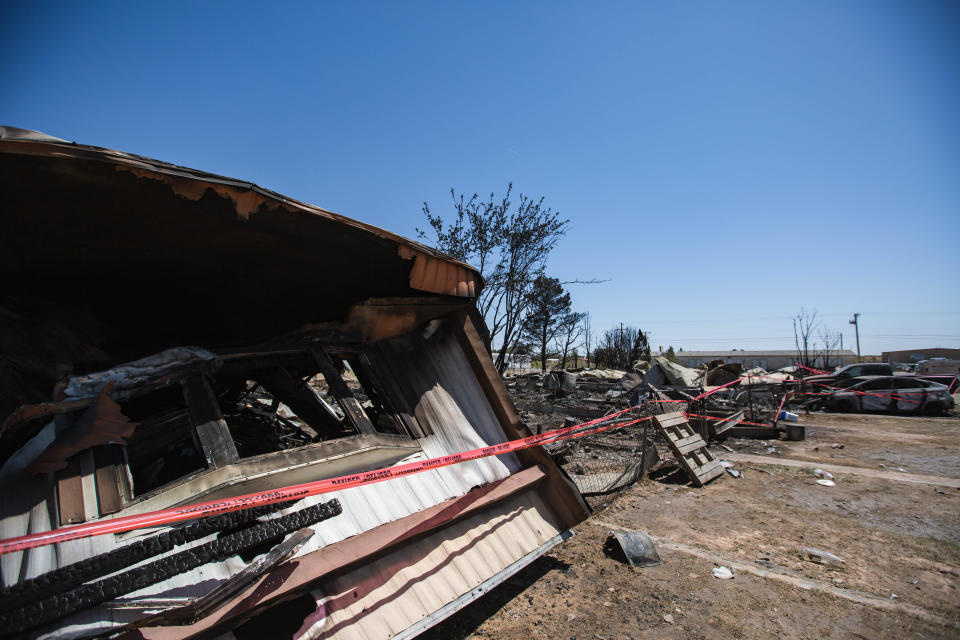Teen engineers design fire alarm system for mobile homes
CHAPARRAL, N.M. - A majority of homes in this unincorporated border community of 16,000 are mobile structures — an affordable option in a place where, per U.S. Census data, median household income from 2016 to 2020 was $31,186 and per capita income was less than $18,000.
Yet, for several reasons, mobile homes also present an enhanced risk of home loss, injury and death from fires. The materials used to construct them, the size of the trailers and internal rooms, the lack of heating and cooling systems plus the potential vulnerabilities of electrical wiring all contribute to the rapid consumption of homes when fire erupts.
Moreover, the community straddles Doña Ana and Otero counties with volunteer fire departments on call at either side of the county line. The next option, if Chaparral volunteers are not available, is to wait for firefighters to arrive from Anthony. Any delay in response decreases the chances of saving a home and, possibly, lives.
A team of four students from Chaparral Middle School, all age 14, researched the problem and envisioned a product that could at least hasten emergency response and buy precious minutes: A low-cost, solar-powered electronic alarm system that simultaneously notifies residents and the nearby fire department of fire, smoke or gas buildup in the home.

"Cost efficiency was a big part to this project because it was made for a low-income community," student Josue Salais said in an interview alongside his teammates, dressed in matching collared shirts and blue neckties.
Their research and a working prototype secured Chaparral Middle School its fourth victory in the annual MESA USA engineering design competition, under the mentorship of math teacher and MESA advisor Rina Viramontes.
The MESA Schools Program offers K-12 afterschool programs in nine states and organizes statewide competitions culminating in a national contest. In June, the national contest, which was conducted virtually, saw two New Mexico schools come out on top who have won the competition previously: Albuquerque magnet school Nex+Gen Academy took the first place title in the high school division while Chaparral topped the middle school division.
The theme of the 2022 competition was "Designing for Equity in your Community," challenging students to research an inequity in their home communities and devise a technological or other engineering solution.
The alarm prototype, built by student David Garcia, consists of a white box standing a few inches in height, attached to a solar battery unit. Alessandro Marentes coded an app that communicates with the alarm, alerting its owner that the alarm has detected a threat.
In a demonstration, the alarm sounded an alert in the presence of a flame and Marentes said the system could accommodate preferences, such as sending a silent alert to the owner in the event smoke was detected during cooking rather than triggering an audible alarm and calling for emergency response.
Student Jessica Lara conducted the research into firefighter response times and the concentration of mobile homes in Chaparral's housing stock included in the team's presentation. Josue Salais, meanwhile, helped develop the technology and test marketed it with an adult client who tried out the alarm in her home.

While the system can bypass notifications for clients who do not own a mobile phone or other device, the students said that, even in this low-income community, mobile devices are an essential item owned by most residents. The project went through several iterations over the year leading up to the June competition, as the students aimed for the most affordable version of a potential product.
As the entire team has graduated into high school or early college programs, Viramontes said the school year beginning in August would begin with a new recruiting effort for the MESA program. Although students may participate from as early as sixth grade in multiple competitions, the team inevitably loses talent to graduation.
"Every year we have to start over," she said.
Algernon D'Ammassa can be reached at 575-541-5451, adammassa@lcsun-news.com or @AlgernonWrites on Twitter.
Others are reading:
This article originally appeared on Las Cruces Sun-News: Teen engineers from Chaparral design fire alarm system for mobile homes

